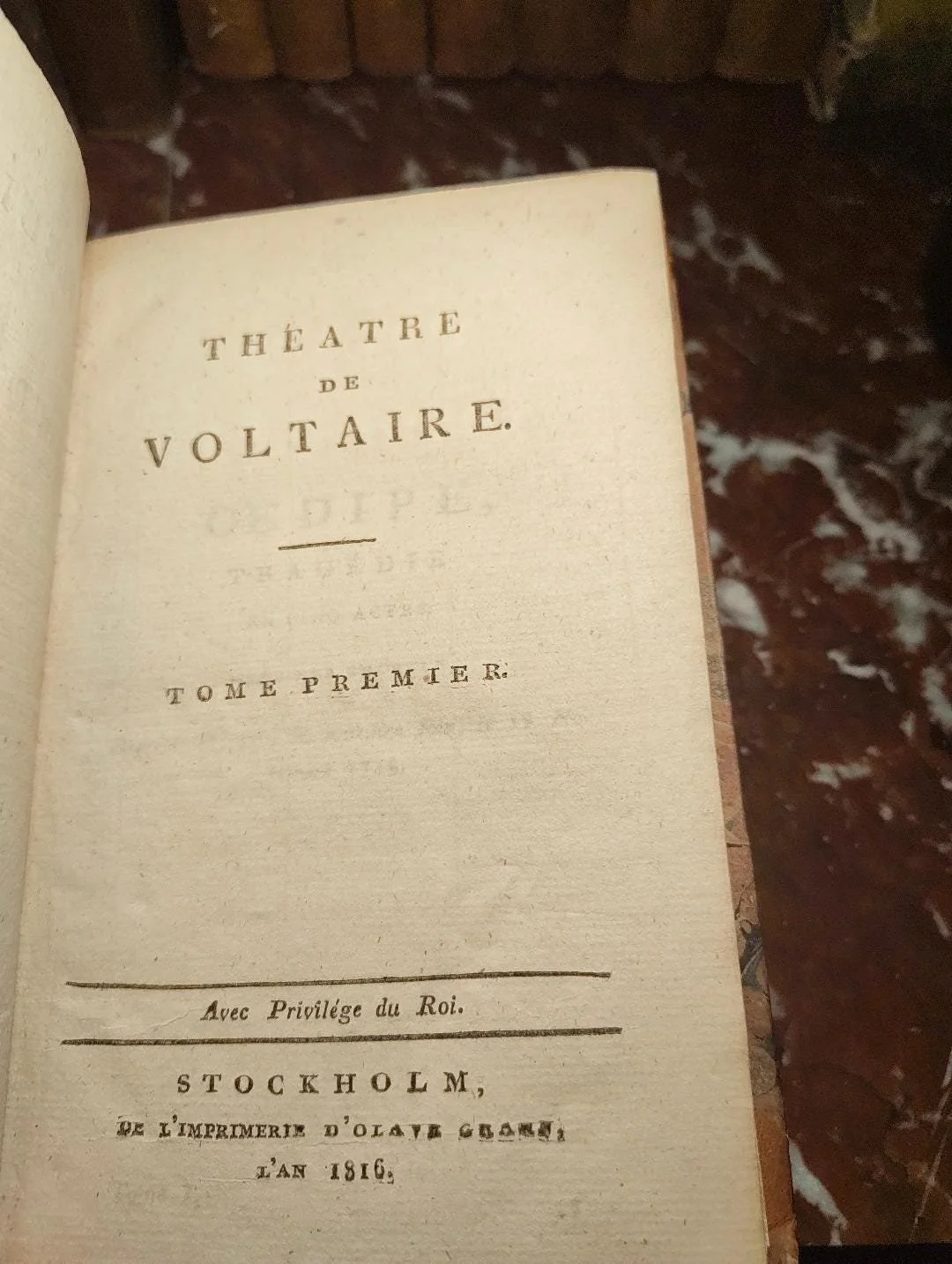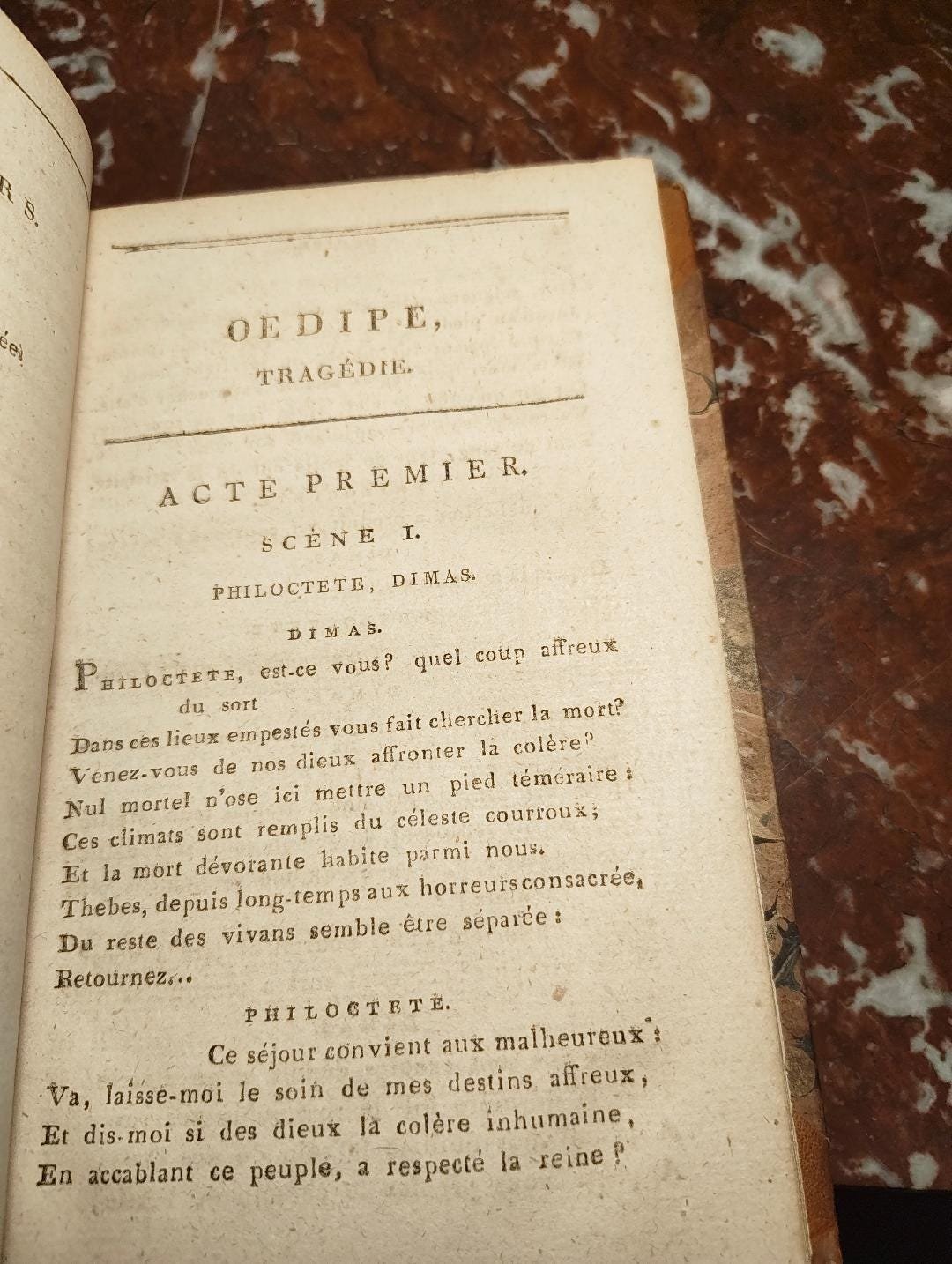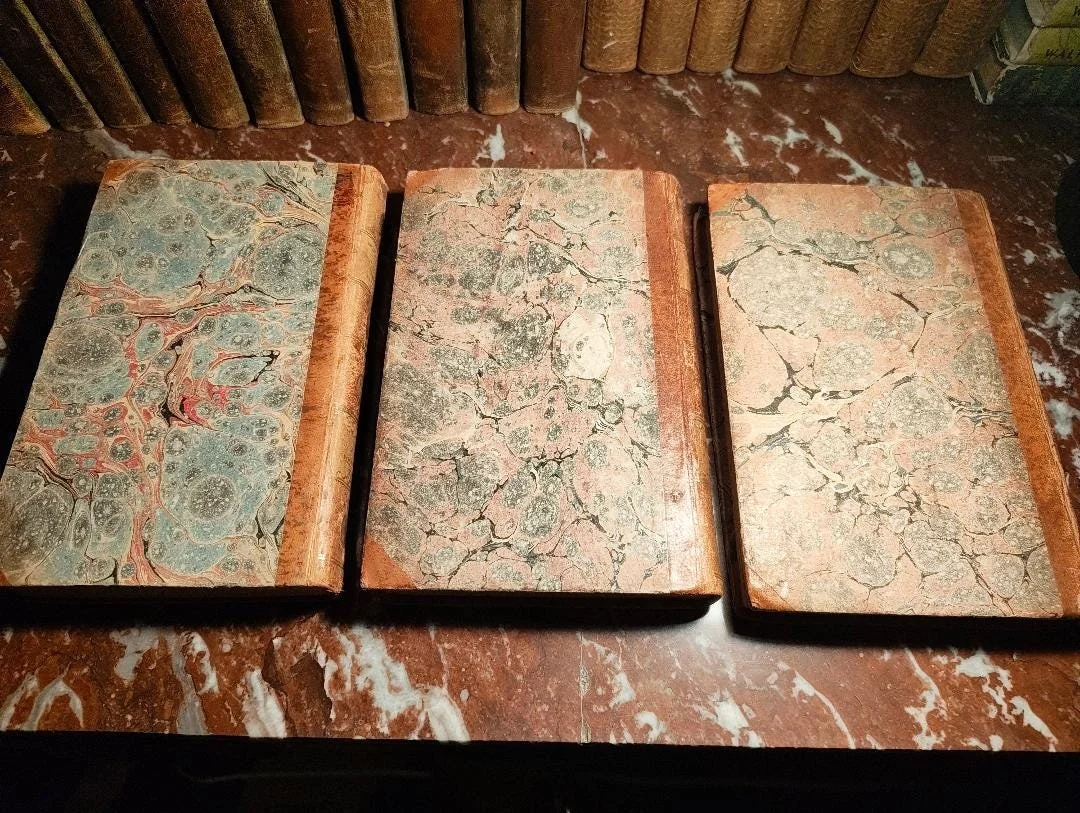 Image 1 of 10
Image 1 of 10

 Image 2 of 10
Image 2 of 10

 Image 3 of 10
Image 3 of 10

 Image 4 of 10
Image 4 of 10

 Image 5 of 10
Image 5 of 10

 Image 6 of 10
Image 6 of 10

 Image 7 of 10
Image 7 of 10

 Image 8 of 10
Image 8 of 10

 Image 9 of 10
Image 9 of 10

 Image 10 of 10
Image 10 of 10











Voltaire. Œdipe, Eryphile, et autres pièces. Stockholm, Olave Grahn, 1816. Three Volumes in Contemporary Half Leather
A rare Swedish printing of French classical theatre, produced for a Nordic readership in the early nineteenth century
This 1816 Stockholm edition of Voltaire’s tragedies offers a remarkable example of French classical literature printed far beyond Paris. Issued as part of Bibliothèque des Auteurs Classiques Français by the Swedish publisher Olave Grahn, the set reflects an ambitious cultural project: the dissemination of French dramatic and literary heritage to Scandinavian readers during a period of growing intellectual exchange across Europe.
The three volumes bring together Œdipe, first performed in 1718, Eryphile, first staged in 1732, and additional plays that formed part of Voltaire’s enduring contribution to the French stage. Each work illustrates the author’s mastery of classical form, moral tension, and psychological clarity. While Voltaire’s historical writings and philosophical essays often dominate his modern reputation, his tragedies were widely read, performed, and admired throughout the eighteenth and early nineteenth centuries. Their appearance in a Swedish imprint underlines the reach of his influence and the appetite for French literature in northern Europe.
The volumes are preserved in contemporary half leather bindings with marbled boards and gilt decorated spines. The bindings show sympathetic age related wear with rubbing along the joints and edges, yet retain their structure and period character. The marbled paper remains vibrant, and the interiors are generally clean with light spotting typical of early nineteenth century printing.
French texts printed in Sweden during this period are uncommon and are increasingly recognised as important artefacts of Nordic book history. They testify to the cosmopolitan dimensions of Scandinavian reading culture and the role Swedish presses played in circulating continental literature.
For collectors of Voltaire, French theatrical tradition, or rare international editions of Enlightenment works, this Stockholm printing offers both literary significance and historical distinction. It is a thoughtful example of how canonical French texts travelled, adapted, and took root in new cultural landscapes.
A rare Swedish printing of French classical theatre, produced for a Nordic readership in the early nineteenth century
This 1816 Stockholm edition of Voltaire’s tragedies offers a remarkable example of French classical literature printed far beyond Paris. Issued as part of Bibliothèque des Auteurs Classiques Français by the Swedish publisher Olave Grahn, the set reflects an ambitious cultural project: the dissemination of French dramatic and literary heritage to Scandinavian readers during a period of growing intellectual exchange across Europe.
The three volumes bring together Œdipe, first performed in 1718, Eryphile, first staged in 1732, and additional plays that formed part of Voltaire’s enduring contribution to the French stage. Each work illustrates the author’s mastery of classical form, moral tension, and psychological clarity. While Voltaire’s historical writings and philosophical essays often dominate his modern reputation, his tragedies were widely read, performed, and admired throughout the eighteenth and early nineteenth centuries. Their appearance in a Swedish imprint underlines the reach of his influence and the appetite for French literature in northern Europe.
The volumes are preserved in contemporary half leather bindings with marbled boards and gilt decorated spines. The bindings show sympathetic age related wear with rubbing along the joints and edges, yet retain their structure and period character. The marbled paper remains vibrant, and the interiors are generally clean with light spotting typical of early nineteenth century printing.
French texts printed in Sweden during this period are uncommon and are increasingly recognised as important artefacts of Nordic book history. They testify to the cosmopolitan dimensions of Scandinavian reading culture and the role Swedish presses played in circulating continental literature.
For collectors of Voltaire, French theatrical tradition, or rare international editions of Enlightenment works, this Stockholm printing offers both literary significance and historical distinction. It is a thoughtful example of how canonical French texts travelled, adapted, and took root in new cultural landscapes.

